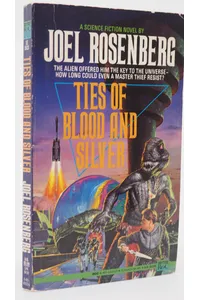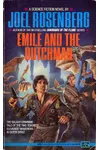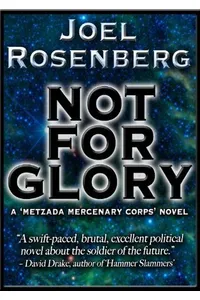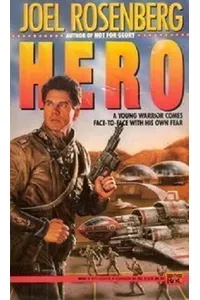Step into the pulse-pounding universe of the Thousand Worlds series, where Jewish mercenaries navigate treacherous alien planets and interstellar conflicts with grit and honor! Written by Joel Rosenberg, this four-part science fiction saga blends military action, cultural survival, and complex characters, offering a unique take on the genre that’s as thought-provoking as it is thrilling.
Unlike typical space operas, Thousand Worlds dives deep into the Jewish diaspora in space, crafting a narrative that’s both a high-stakes adventure and a meditation on identity and resilience. Ready to explore a galaxy where survival demands courage and cunning? Let’s blast off!
How Thousand Worlds Began
Joel Rosenberg, a Canadian-American author known for his Guardians of the Flame fantasy series, launched Thousand Worlds in 1984 with Ties of Blood and Silver. Inspired by his Jewish heritage and fascination with military strategy, Rosenberg crafted a universe where displaced Jewish settlers on the harsh planet Metzada thrive as elite mercenaries. His goal? To explore themes of freedom and survival through a sci-fi lens, blending action with cultural depth.
Rosenberg’s background as a gun rights advocate and his sharp wit shaped the series’ gritty tone and detailed world-building. Published by major houses like Signet and Roc, Thousand Worlds emerged as a bold, if lesser-known, gem in military science fiction, running until its finale in 1990.
The Heart of Thousand Worlds
The Thousand Worlds series, also called the Metzada Mercenary Corps, spans four novels, each spotlighting different characters in the same richly imagined universe. Ties of Blood and Silver (1984) kicks things off, following a young thief navigating Metzada’s cutthroat society. Emile and the Dutchman (1986) shifts to a quirky duo in the Thousand Worlds Contact Service, blending humor with high-stakes first-contact missions. Not for Glory (1988) dives into a Metzadan assassin’s moral dilemmas, while Hero (1990) centers on young Ari Hanavi, who must overcome fear to prove himself in combat.
The series shines through its themes of cultural survival and heroism. Metzada, a barren rock settled by Jewish refugees exiled from Earth, forces its inhabitants to live by a strict code of honor rooted in their ancestry. Rosenberg weaves Jewish identity into the narrative, exploring how tradition endures in alien worlds. The fast-paced prose, vivid battle scenes, and morally complex characters make Thousand Worlds a standout, appealing to fans of gritty sci-fi like Gordon R. Dickson’s Dorsai series.
Rosenberg’s world-building is meticulous, with each planet reflecting distinct national traits, from mercantile libertarianism to rigid hierarchies. The series’ blend of action, humor, and ethical quandaries keeps readers hooked, while its focus on family ties and loyalty adds emotional depth.
Why Thousand Worlds Resonates
Though not as widely known as Rosenberg’s fantasy work, Thousand Worlds has a cult following among military sci-fi fans for its bold storytelling and cultural nuance. Its exploration of Jewish identity in a futuristic setting feels fresh even today, offering a perspective rarely seen in the genre. Fans praise the series for its compelling characters and thought-provoking themes, with reviewers like David Drake calling Not for Glory a “swift-paced, brutal, excellent political novel.”
The series’ legacy lies in its ability to balance entertainment with deeper questions about survival and honor. For readers craving a unique sci-fi experience, Thousand Worlds remains a hidden treasure, its action-packed tales and cultural richness ripe for rediscovery.
- Publication Years: 1984–1990
- Number of Books: 4
- Setting: Metzada and the Thousand Worlds universe
Grab Ties of Blood and Silver and dive into Thousand Worlds’s thrilling galaxy of mercenaries, honor, and survival!



